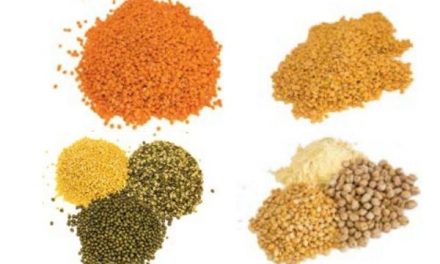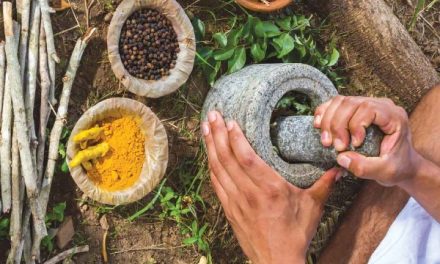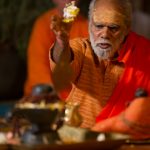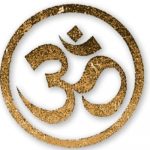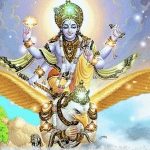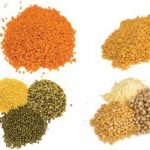 Purify with Panchakarma
Purify with Panchakarma
by Dr. P. R. Vishnu BAMS, MD
Panchakarma is a formidable Ayurvedic treatment to detoxify and purify body and mind. It is known for its beneficial effects on overall health, wellness and self-healing.
In Sanskrit pancha means five and karma, action. Panchakarma consists of five different actions to eliminate the waste components and toxins that accumulate over time in our body and to restore the natural rhythm of the three doshas, an Ayurvedic term relating to the physiological energetic principles through which the body and mind function.

Lord Dhanwantari, Divine Founder of Ayurveda
The term dosha in Sanskrit means error. When the doshas are out of balance, either by too much or by too little, disease will follow. The miracle of the human body is that it has a natural healing intelligence, which is capable of constantly renewing and rejuvenating itself. However when dosha imbalance and a weakened digestive capacity allow the accumulation of toxic impurities—known in Sanskrit as ama—in different parts of the body both physical and mental well-being diminish. The result is disease.
The process of panchakarma is a very powerful therapy to eliminate the accumulated toxins from the body, improve the metabolic rate and digestive fire, bring balance to the doshas and bringing vibrant health. Since Ayurveda is preventative as well as curative, one does not need to have a specific problem to benefit from panchakarma. Classical texts of Ayurveda recommend that maximum benefit from panchakarma occurs when treatment is performed on a regular, seasonal basis, three to four times per year. However, this may not be practicable for most, but even once a year will have a profound purifying effect.
In the stressful environments in which many of us now live, toxins gradually accumulate in the body causing disease. Panchakarma is designed to restore the body’s natural balance. In just two weeks this powerful healing therapy can leave the body younger, healthier, stronger and free from chronic ailments and the mind calm, stress-free, and relaxed with optimum health and well-being.
Stages of Panchakarma
There are three stages in panchakarma therapy, each as important as the other.
1. purva karma (the preparatory stage)
2. pradan karma (the treatments)
3. pachat karma (post-treatment)
Purva Karma—Preparatory Stage
There are several techniques used in the initial purificatory process. Snehana The patient drinks medicated oil or ghee and is massaged with medicated oil. This lubrication enables easy elimination of the fat-soluble toxins and removes blockages created by metabolic waste. Svedana Here heat is applied to open the pores and channels for ease of elimination of water-soluble waste. Techniques used include steam bath, hot bundles, leaf bundles, powder bundles, among others.
Pradan Karma—the Five Actions—Treatment Stage Vamana (emesis)
Therapeutic-induced vomiting reduces the imbalance of kapha dosha. Virechana (purgation) Medicated purgation through the bowels, eliminates imbalance of pitta accumulated in the liver and gallbladder. Sneha Basti (oil enema) Anally-administered medicated oil or ghee lubricates the large intestine, balancing vata. Kashya Basti (decoction enema) Anally-administered herb-infused decoction high in electrolytes and alkalinity helps neurological, auto-immune and degenerative conditions. Nasyam (nasal medication) Medicated oil or powder introduced through the nose reduces kapha imbalances above the clavicle region.
Paschat Karma –Post Treatment Stage
It is very important to maintain a pure vegetarian diet and healthy lifestyle for one month or at least equal to the length of the treatment after the therapy and to take rasayana herbs (revitalising herbs) during this period of readjustment.
The Doshas
Vata
The principle of vata is action or movement. All movement in the body is governed by vata. Diseases caused by vata imbalance include neurological disease and degenerative disease. Conditions such as osteoporosis, osteoarthritis, Parkinson’s, are attributable to vata imbalance as well as anxiety, insomnia, nervousness and hyperactivity.
Pitta
The principle of pitta is fire. Digestion, metabolism, hormones, temperature regulation, immunity are controlled by pitta. Diseases caused by pitta imbalance include metabolic syndromes, auto-immune disease, disease on the rheumatic spectrum, endocrine disease and digestive disease. Frustration, anger, irritability, and intolerance are all signs of pitta imbalance.
Kapha
The principle of kapha is stability and lubrication. Lubrication of joints, memory, stability of mind, body fluids, weight are controlled by kapha. Diseases caused by kapha imbalance include obesity, excessive sleep, asthma, tumours. Depression, over-sentimentality, stubbornness, complacency are all signs of kapha imbalance.
Benefits of Panchakarma
- Increases immunity
- Promotes detoxification
- Increases energy levels,
- revitalises Anti-aging,
- has a profound rejuvenative effect
- Prevents neuro-degenerative disease
- Prevents bone-degenerative disease
- Increases metabolism
- Promotes weight loss
- Enhances the mind;
- promotes mental clarity
- on a deeper level, enhances consciousness.
Dr. P. R. Vishnu BAMS, MD is the director of the Sivananda Institute of Health at the Sivananda Dhanwantari Ashram in Neyyar Dam, south India. e-mail: [email protected]

